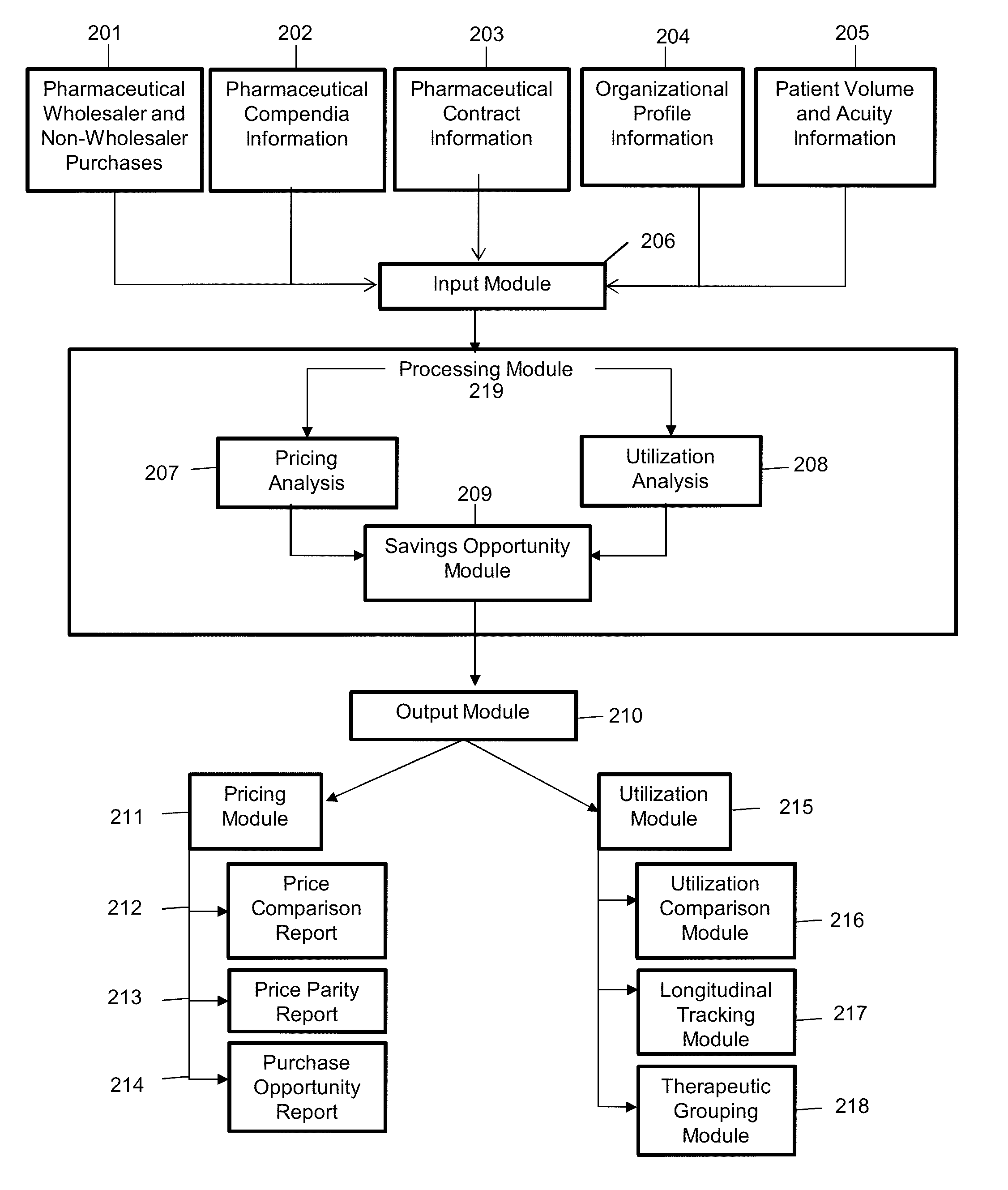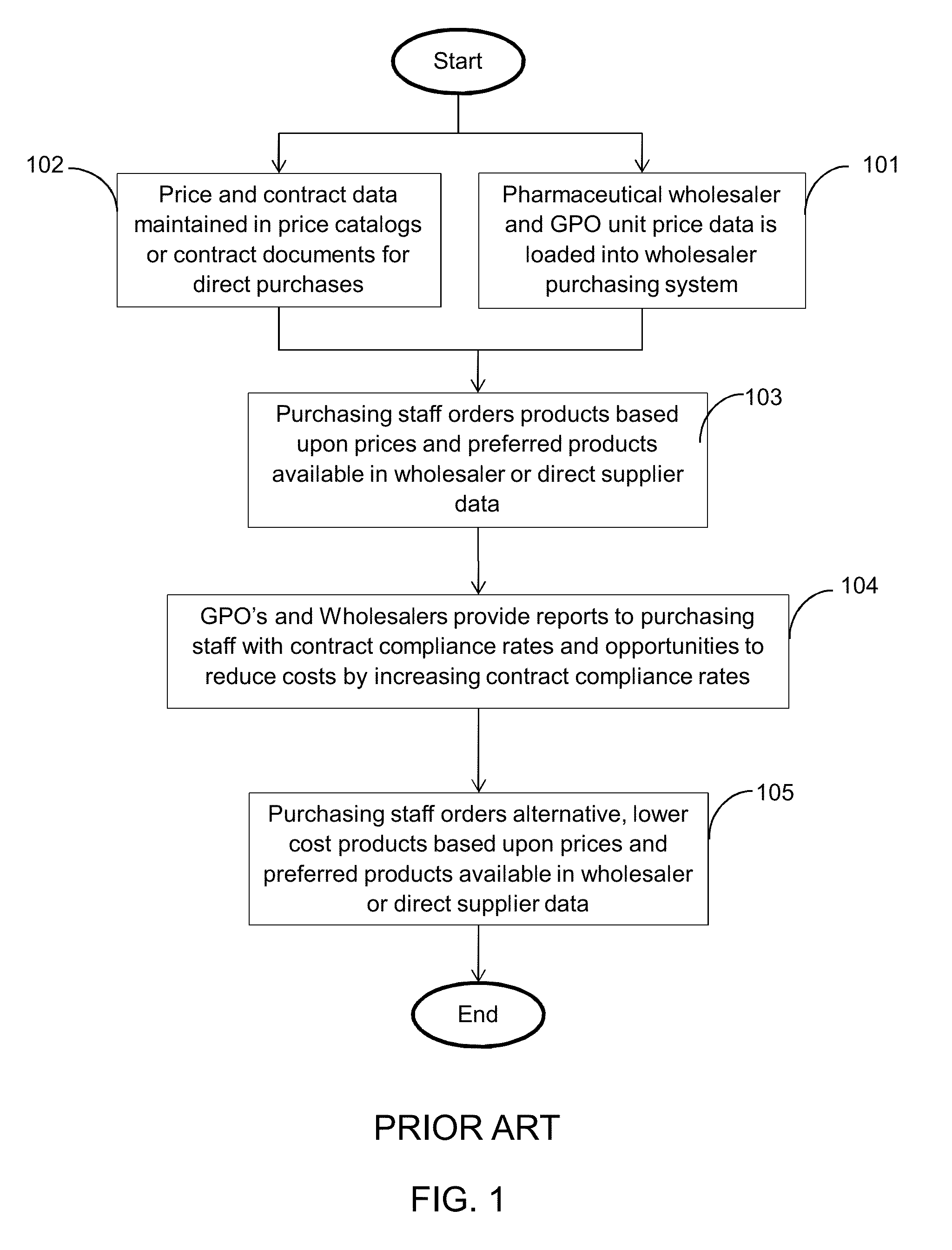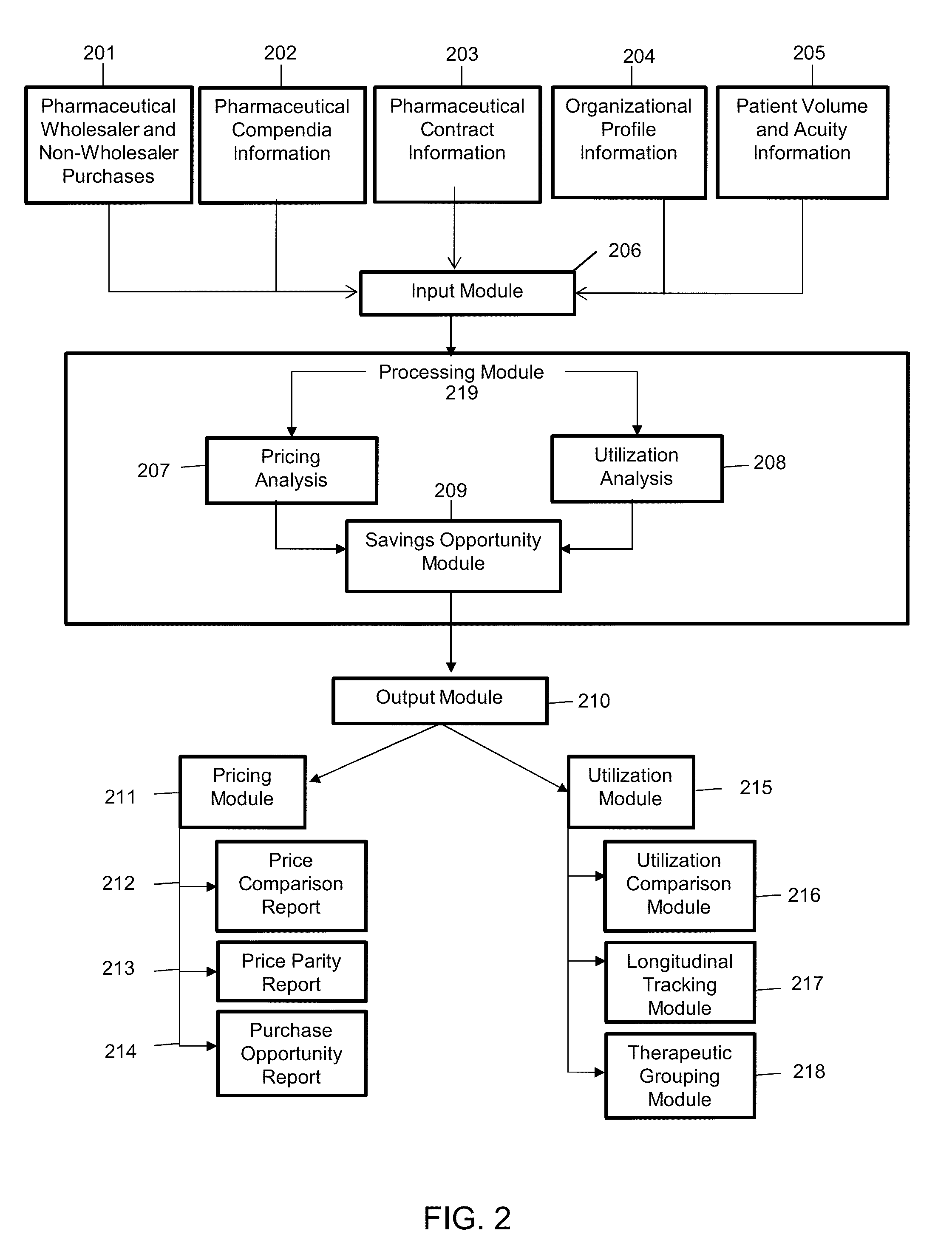System and method for comparing pharmaceutical prices and medication utilization
a technology of drug utilization and price comparison, applied in the field of pharmaceutical item pricing and utilization patterns, can solve the problems of purchasers at a competitive disadvantage, lack of transparency, and ongoing challenges of healthcare providers and administrators in shrinking reimbursement, and achieve the effect of rapid identification and measurement of the impact of programmatic changes in drug utilization and pricing
- Summary
- Abstract
- Description
- Claims
- Application Information
AI Technical Summary
Benefits of technology
Problems solved by technology
Method used
Image
Examples
Embodiment Construction
[0052]The present invention describes a process to collect, standardize, organize, analyze, compare and report pharmaceutical purchase data in a consistent, unbiased way while maintaining confidentiality of contract terms and provisions of individual suppliers and organizations involved in the purchasing, contracting and supplying of pharmaceutical products.
[0053]Definition of terms used herein are as follows:
[0054]Adjusted patient days: An aggregate figure reflecting the number of days of inpatient care, plus an estimate of the volume of outpatient services, expressed in units equivalent to an inpatient day in terms of level of effort. The figure is derived by first multiplying the number of outpatient visits by the ratio of outpatient revenue per outpatient visit to inpatient revenue per inpatient day. The product (which represents the number of patient days attributable to outpatient services) is then added to the number of inpatient days. Originally, the purpose of this calculat...
PUM
 Login to View More
Login to View More Abstract
Description
Claims
Application Information
 Login to View More
Login to View More - R&D
- Intellectual Property
- Life Sciences
- Materials
- Tech Scout
- Unparalleled Data Quality
- Higher Quality Content
- 60% Fewer Hallucinations
Browse by: Latest US Patents, China's latest patents, Technical Efficacy Thesaurus, Application Domain, Technology Topic, Popular Technical Reports.
© 2025 PatSnap. All rights reserved.Legal|Privacy policy|Modern Slavery Act Transparency Statement|Sitemap|About US| Contact US: help@patsnap.com



